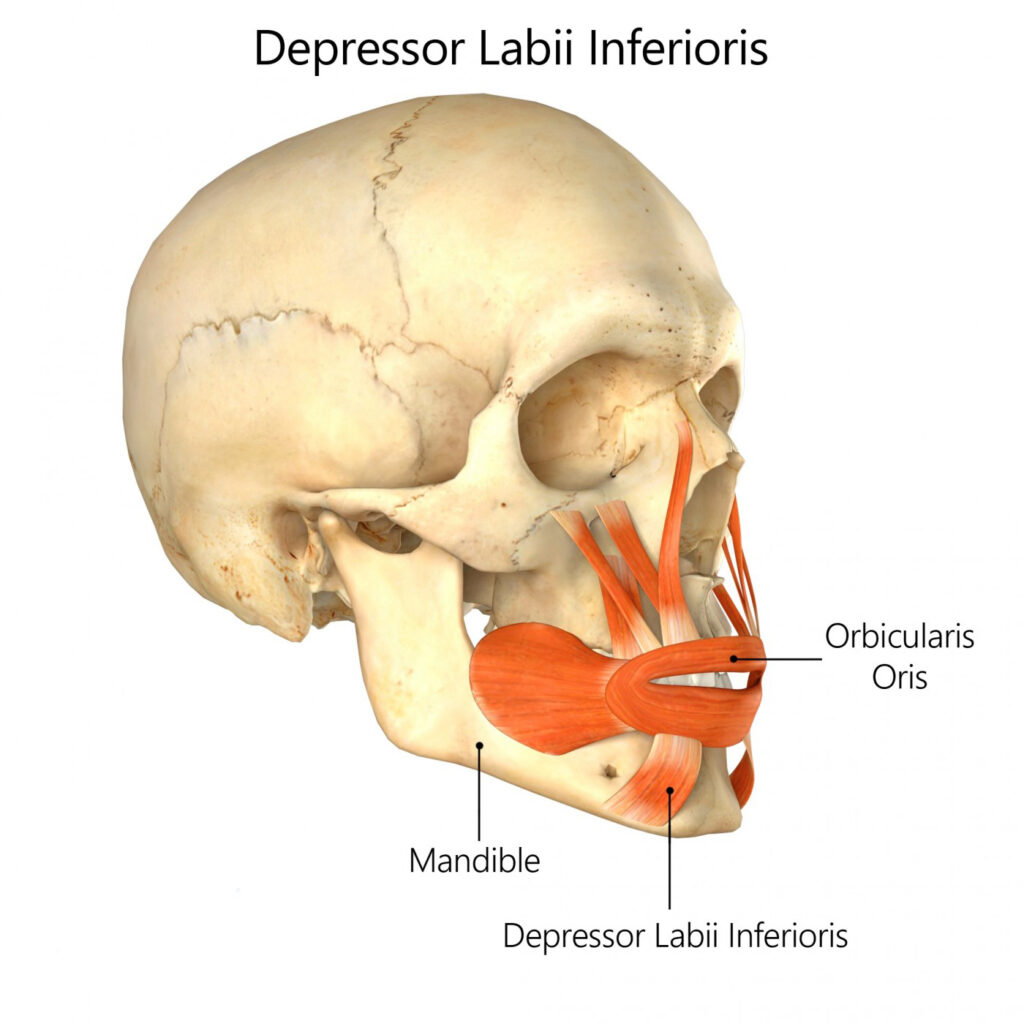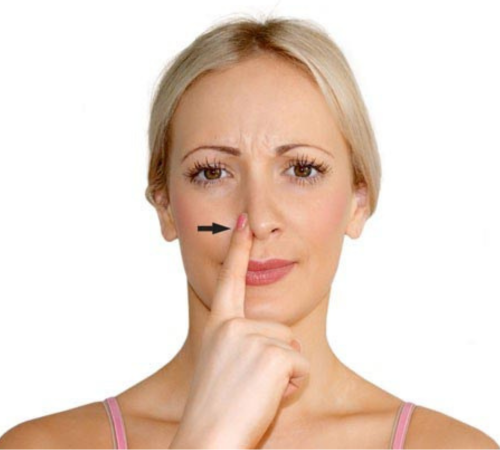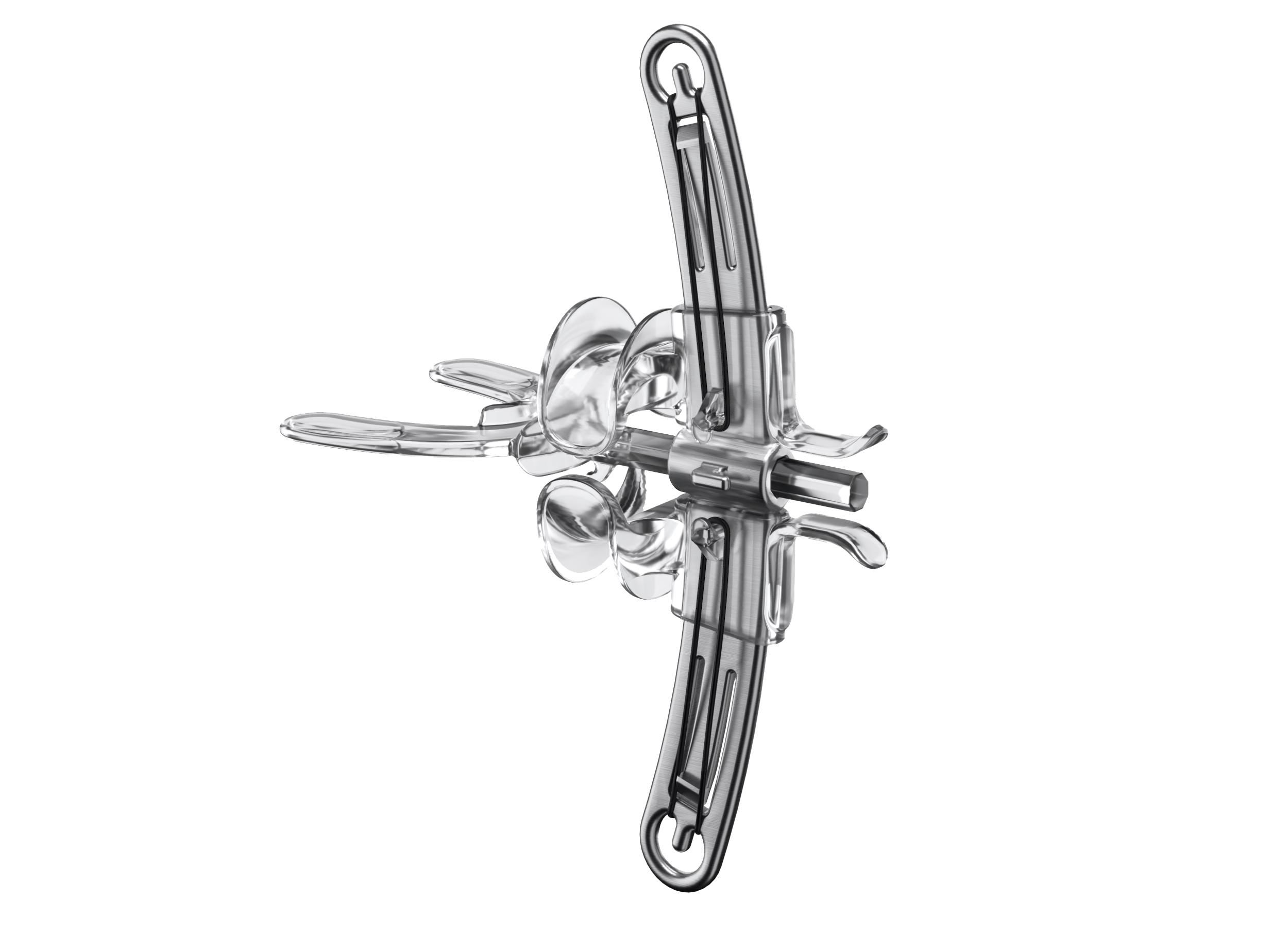ISO Metrik Face Education
Contact Us
Call Us
+1 (678) 632-3745
TESTMONIALS
ISO Metrik offers a game-changing, non-invasive solution to facial sagging — a safer, easier, and more affordable alternative to Botox and surgery. Its potential to support stroke patients with facial weakness makes it an exciting potential addition to modern stroke. rehabilitation.
Dr. Will Humphries
MAKE AN APPOINTMENT
Depressor Labii Inferioris
Posted on 30th Jul 2020 / Published in: Face
General information
The depressor labii inferioris is one of approximately 40 muscles in the human face and assists in making a pout of the lips. It is located below the bottom lip near the chin.
Literal meaning
The muscles that depress the lower lip.
Interesting information
The depressor labii inferioris, sometimes referred to as the quadratus labii inferioris, is a facial muscle whose function is to assist in the downward motion of the lower lip. A significant amount of fat is interspersed between the fibers of this muscle. The depressor labii inferioris acts by pulling the flesh and skin of the lower lip down, baring the lower teeth.
To feel the depressor labii inferioris, gently place your finger under the lower lip and slightly lateral to the midline of your lips. Then move your lower lip down and to the side as if you were to bare your teeth. You should feel the depressor labii inferioris contracting beneath your fingertips with the movement.
Symptoms of depressor labii inferioris damage or dysfunction can include decreased movement of the lower lip, muscle pain in the chin, muscle weakness, loss of muscle control, bleeding, swelling or bruising. Pain and difficulty of muscle function may be related to conditions such as stroke, Bell’s palsy, neuromuscular diseases and injuries or muscle tears and strains. Treatment for nerve injuries typically involves surgical resection and repair.
Origin
External oblique line of the lower jaw (mandible).
Insertion
Integument (skin) of the lower lip.
Function
To help depress the lower lip.
Nerve supply
Facial nerve.
Blood supply
Inferior labial branch of the facial artery.

Relevant research
A study conducted on patients with marginal mandibular nerve paralysis has demonstrated that surgical resection of the depressor labii inferioris muscle can be an effective treatment route to restore lower lip symmetry and movement. Results are demonstrated to be permanent, with the majority of patients requiring only a single procedure.
Liquidato, Bianca Maria, Mirna Duarte Barros, Adriana Leal Alves, and Celina Siqueira Barbosa Pereira. “Anatomical Study Of The Digastric Muscle: Variations In The Anterior Belly.” International Journal of Morphology 25.4 (2007): Print.
Hussain G, Manktelow RT, Tomat LR., British Journal of Plastic Surgery. 2004 Sep;57(6):502-10.
Another study outlines a systematic protocol for the treatment of lower lip asymmetry, usually caused by loss of function in the depressor labii inferioris. The study concluded that lip asymmetry is optimally managed using treatments such as lidocaine and chemodenervation as well as surgical resection of the depressor labii inferioris.
Lindsay, Robin W., Colin Edwards, Chris Smitson, Mack L. Cheney, and Tessa A. Hadlock. “A Systematic Algorithm For The Management Of Lower Lip Asymmetry.” American Journal of Otolaryngology 32.1 (2009): 1-7. Print.
Depressor labii inferioris exercises
This simple pout exercise targets the depressor labii inferioris and mentalis muscles which help with the downward movement and protrusion of the lower lip. Make a pouting face to draw your lower lip out and downwards. Hold this position for five to ten seconds, then relax. Perform ten repetitions of this exercise at a time for optimal results.

Depressor Labii Inferiors: Controlling the Lower Lip and Refining Expression
The depressor labii inferiors is a flat, triangular muscle that lowers the bottom lip, allowing expressions of sadness, tension, sarcasm, or speech articulation. It works in coordination with the orbicularis Oris, depressor Anguli Oris, and mentalis to form and move the lower lip. Though often overlooked, this muscle significantly influences the contour, tension, and mobility of the lower third of the face.

Anatomy & Function
- Origin: Oblique line of the mandible, just below the mental foramen
- Insertion: Skin and muscle of the lower lip, blending with the orbicularis oris
- Function: Pulls the lower lip downward and slightly laterally
- Nerve Supply: Mandibular branch of the facial nerve (CN VII)
- Synergistic Muscles: Mentalis, depressor Anguli Oris, Orbicularis Oris
The Problem: Mandibular Resorption & Lower Lip Weakness
As the mandible begins to weaken with age or disuse, and muscular coordination deteriorates, the depressor labii inferiors loses tone and responsiveness. This can lead to:
- Lower lip thinning or sagging
- Asymmetry during speech or expression
- Formation of marionette lines (from mouth corners to chin)
- Overactivation of compensatory muscles like the mentalis, causing chin dimpling or wrinkling
This results in a look of discontent, imbalance, or premature aging—even when the rest of the face remains expressive.
The ISO Metrik Device: Indirect Activation and Balance for the Lower Lip System
The ISO Metrik Device doesn’t isolate the depressor labii inferiors, but it engages it indirectly through resistance-based lip movements, especially in conjunction with the Orbicularis Oris, depressor Anguli Oris, and mandibular stabilizers.
How It Helps:
- Lip resistance activates both upper and lower lip muscles during use, promoting coordination and tone
- Mandibular bite stabilization reinforces the origin point of the muscle, enhancing strength and structure
- Restores lower lip balance, improving facial symmetry during talking, smiling, and resting
- Reduces the burden on surrounding muscles by supporting proper muscle engagement patterns
This balanced activation supports a firm, controlled, and expressive lower lip—naturally.
Why the Depressor Labii Inferiors Matters
Your lower lip is one of the first places people look when you speak or express emotion. When the depressor labii inferiors is strong and properly supported, your lower face looks composed, confident, and youthful. When it weakens, the face appears drawn, unbalanced, or prematurely aged.
The ISO Metrik Device helps restore the entire lower lip system from the inside out—by engaging the bones and muscles that support it with every rep.
Want a firmer lower lip, better mouth balance, and reduced marionette lines?
Train the depressor labii inferiors and its supporting system with the ISO Metrik Device.
TESTMONIALS
Dimply dummy text of the deaprinting and typesetting industryorem Ipsum has been the industry’s standard dummy dearty.
DAVID SMITH
CEO,Radiustheme
Contact Us
Call Us
+1 (678) 632-3745
MAKE AN APPOINTMENT
Your journey to facial rejuvenation begins here. Join the ISO Metrik Device Community today.

